第一步:关闭防火墙和selinux
[root@localhost ~]# systemctl stop firewalld //临时关闭,重启失效
[root@localhost ~]# systemctl disable firewalld //永久关闭
[root@localhost ~]# setenforce 0 //临时关闭selinux重启失效
[root@localhost ~]# vi /etc/selinux/config //编辑文件永久关闭selinux

确认防火墙和selinux已关闭
[root@localhost ~]# getenforce
[root@localhost ~]# systemctl status firewalld

二、部署服务端
2.1安装yum源
[root@localhost ~]# yum -y install epel-release
2.2 安装软件
[root@localhost ~]# yum -y install cobbler cobbler-web tftp-server xinetd dhcp httpd pykickstart
2.3 检查cobbler
[root@localhost ~]# systemctl start cobblerd
[root@localhost ~]#systemctl enable cobblerd
[root@localhost ~]# systemctl start httpd
[root@localhost ~]#systemctl start xinetd
[root@localhost ~]#systemctl start dhcpd
[root@localhost ~]#systemctl start tftp
[root@localhost ~]#cobbler check //一般会出现一些错误看,一个个解决即可

2.4解决上述问题
第一个和第二个问题: 编辑 setting 文件,将 server 和 next_server 后的IP改为服务端的IP
[root@localhost ~]# vi /etc/cobbler/settings


第三个问题: 这里提示关闭selinux ,上面我们已经临时关闭了可忽略
第四个问题: 编辑 /etc/xinetd.d/tftp 将 disable 项改为no
[root@localhost ~]# vi /etc/xinetd.d/tftp
[root@localhost ~]# systemctl restart xinetd
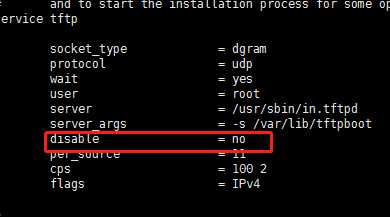
第五个问题:需要执行 cobbler get-loaders
[root@localhost ~]# cobbler get-loaders

第六个问题:开启rsync
[root@localhost ~]# systemctl restart rsyncd
[root@localhost ~]# systemctl enable rsyncd
第七个问题可忽略
第八个问题: 这里生成的密码就是安装后的系统默认密码:cobbler为标识可自行修改,123456为密码,将生成的密码添加到文件中
[root@localhost ~]# openssl passwd -1 -salt ‘cobbler‘ ‘123456‘
$1$cobbler$sqDDOBeLKJVmxTCZr52/11
[root@localhost ~]# vi /etc/cobbler/settings

第九个问题:是需要安装fence-agents 来控制电源,可忽略,也可安装
2.6重启cobbler,再次检查,问题都解决了
[root@localhost ~]# systemctl restart cobblerd
[root@localhost ~]# cobbler check

3.修改DHCP
[root@localhost ~]# vi /etc/cobbler/settings //修改为1

[root@localhost ~]# vi /etc/cobbler/dhcp.template
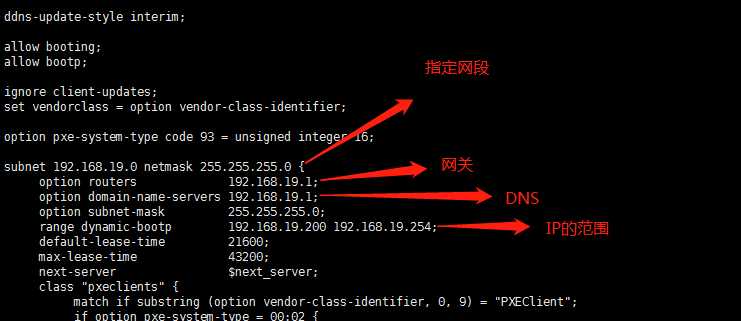
4.同步配置
[root@localhost ~]# systemctl restart cobblerd
[root@localhost ~]# cobbler sync
5.验证:新建一个虚拟机开启自动获取IP后进入这个界面表示成功了
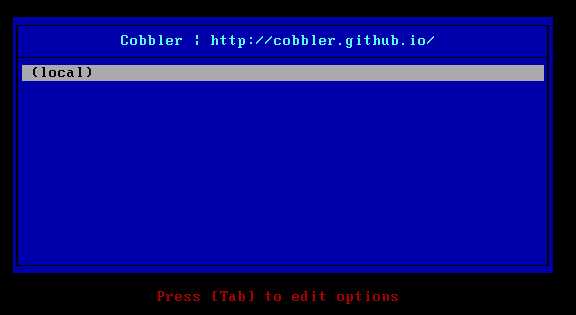
三、添加镜像
3.1挂载镜像
使用虚拟机的话注意下图两项都勾选了,在挂载

[root@localhost ~]# mkdir /mnt/centos7 //创建挂载点
[root@localhost ~]# mount /dev/sr0 /mnt/centos7 //挂载
[root@localhost ~]# df -h //查看
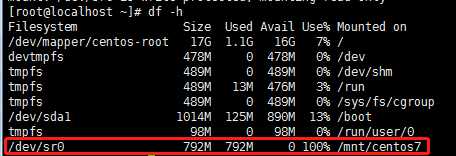
3.2导入镜像
[root@localhost ~]# cobbler import --path=/mnt/centos7 --name=centos7 --arch=x86_64
3.3 查看镜像
[root@localhost ~]# cobbler distro report --name=centos7-x86_64
3.4 查看镜像profile 信息 这里能看到这个镜像使用的KS文件等
[root@localhost ~]# cobbler profile report --name=centos7-x86_64 //这里默认的有,可以修改
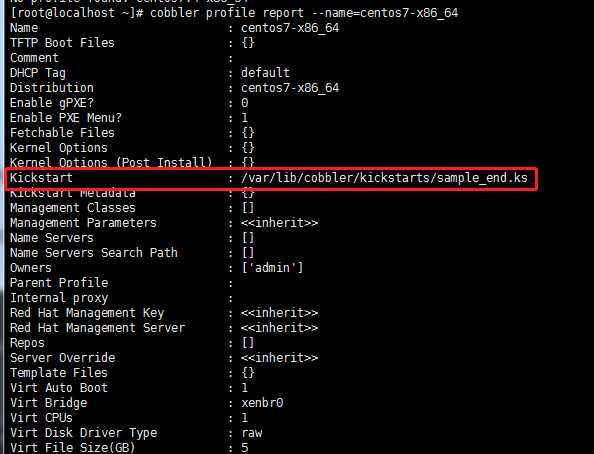
3.5 指定ks文件
[root@localhost ~]# cd /var/lib/cobbler/kickstarts/ //ks文件都在这个目录下,可自己创建一个
[root@localhost kickstarts]# cobbler profile edit --name=centos7-x86_64 --kickstart=/var/lib/cobbler/kickstarts/default.ks //这里指定为default.ks只是示范,还需要更改内容 这里的 edit 为修改,如果profile没有默认的ks文件,则使用add
[root@localhost kickstarts]# cobbler profile report --name=centos7-x86_64 //再次查看显示更改

3.6再次同步配置
[root@localhost ~]# cobbler sync
3.7再次客户端验证 就显示出系统镜像,选择即可安装
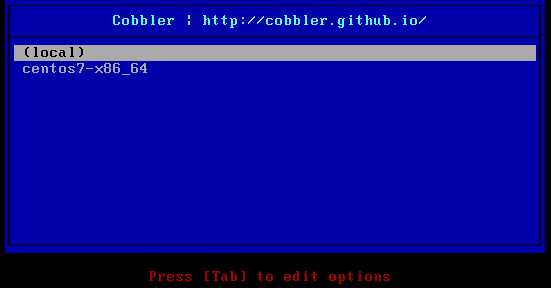
四、功能扩展
#CentOS7系统网卡名变成eno...这种我们需要修改为我们常用的eth0,使用下面的参数。但要注意是CentOS7才需要下面的步骤,CentOS6不需要。
#修改centos7内核
[root@localhost ~]# cobbler profile edit --name=Centos7.1-distro-x86_64 --kopts=‘net.ifnames=0 biosdevname=0‘
#新部署机器安装yum源,并同步。建议使用内网yum源,在这里使用阿里云yum源
[root@localhost ~]# cobbler repo add --name=centos-7-base --mirror=http://mirrors.aliyun.com/centos/7/os/x86_64/Packages/ --arch=x86_64 --breed=yum
#同步yum源
[root@localhost ~]#cobbler reposync
#每次修改profile都需要同步
[root@localhost ~]# cobbler sync
#根据Mac地址来匹配安装指定系统
[root@localhost ~]#cobbler system add --name=localhost --mac=00:0C:29:6E:41:CB --profile=Centos7-x86_64 \
--ip-address=10.0.0.110 --subnet=255.255.255.0 --gateway=10.0.0.2 \
--interface=eth0 --static=1 --hostname=localhost --name-servers="114.114.114.114 8.8.8.8"
参考链接:https://www.jianshu.com/p/025c2cef84e0
原文:https://www.cnblogs.com/ZJZTY/p/13968374.html